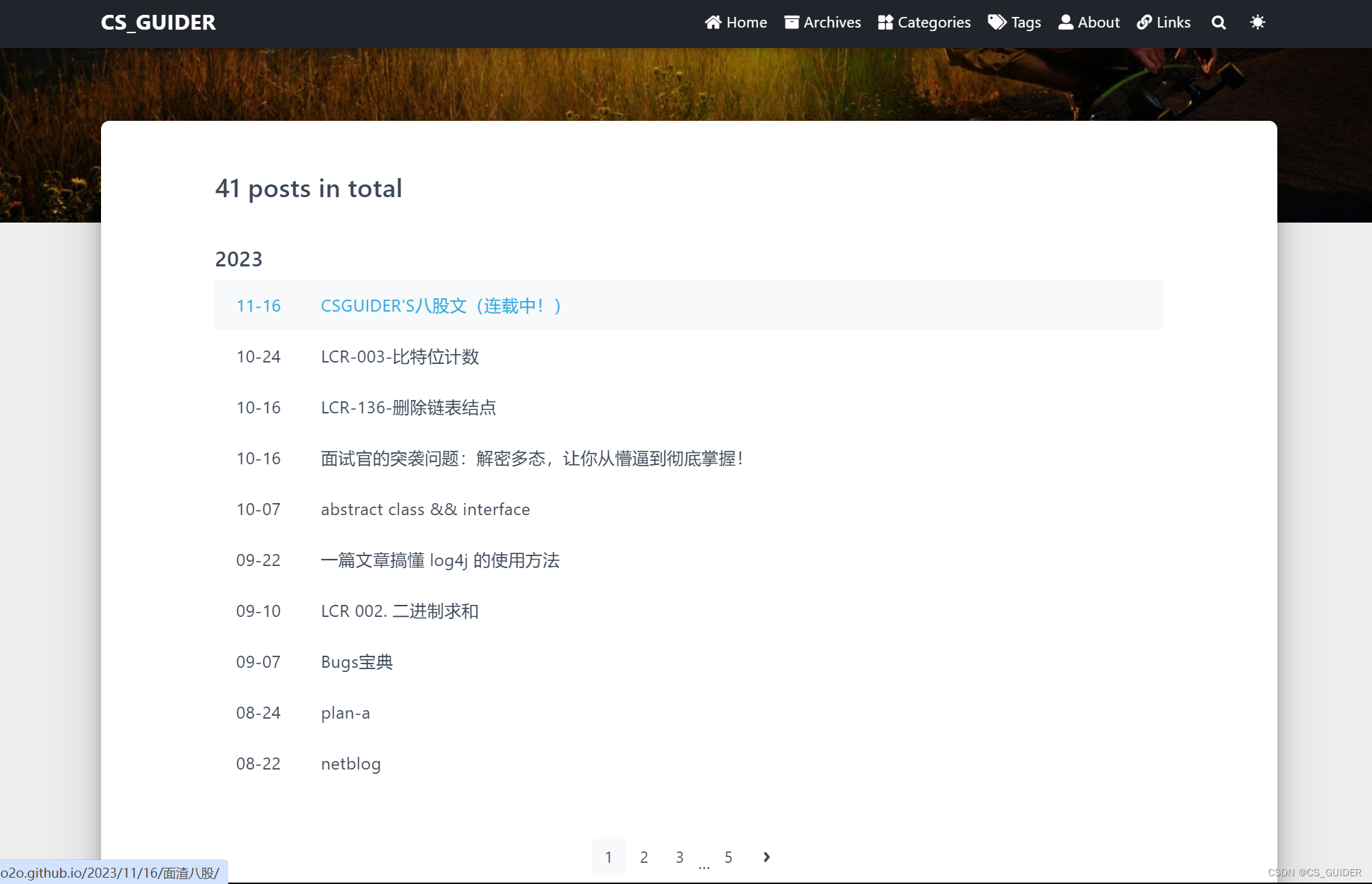本文主要是介绍姓名升序,若相同则按照年龄升序——集合的几种排序方式(有问必答版),希望对大家解决编程问题提供一定的参考价值,需要的开发者们随着小编来一起学习吧!
见者有缘,缘来好运。诚邀各位围观我的博客【CS_GUIDER】:
我的云服务器到期了,所以这里放两个部署在码云和 GitHub 的链接:
https://wlei224.gitee.io (Gitee托管,速度极快)
https://wl2o2o.github.io(Github托管,点击有╰°▽°╯)
我的开源博客涵盖了八股文、Java基础、JVM、MySQL、Linux、框架技术、算法以及其他领域的文章,博客域名长期有效!!!如果说对您来说有用,请收藏号链接奥。万分感谢。请放心,开源博客,没有任何套路。
个人博客建站教程长期不定时连载,囊括我基于 Hexo | fluid 主题的搭建版本记录以及搭建踩坑记录,还有基于原 fluid 主题增加的小功能,如果感兴趣,欢迎大家在页脚评论区咨询。

不bb,直接上源码
package com.wl2o2o.javau8g;import java.util.ArrayList;
import java.util.Comparator;
import java.util.List;
import java.util.stream.Collectors;/*** 实现集合排序的几种方式* @Author <a href="https://github.com/wl2o2o">程序员CSGUIDER</a>* @From <a href="https://wl2o2o.github.io">CSGUIDER博客</a>* @CreateTime 2024/4/15*/public class CollectionSort {public static class Student implements Comparable<Student>{private String name;private int age;public String getName() { return name;}public void setName(String name) { this.name = name;}public int getAge() { return age;}public void setAge(int age) { this.age = age;}public Student(String name, int age) { this.name = name; this.age = age;}@Overridepublic String toString() {return "Student {" +"name='" + name + '\'' +", age=" + age +'}';}// 重写比较规则:按姓名升序,姓名相同按年龄升序@Overridepublic int compareTo(Student o) {int flag = this.name.compareTo(o.name);if (flag == 0) {return this.age - o.age;} else {return flag;}}}public static void main(String[] args) {List<Student> students = new ArrayList<>();students.add(new Student("Alice", 20));students.add(new Student("Bob", 22));students.add(new Student("Judy", 18));students.add(new Student("cS", 18));students.add(new Student("Alice", 23));students.add(new Student("Charlie", 20));System.out.println("Before sorting:");for (Student student : students) {System.out.println(student);}// 方式一:适用于类已经实现 Compareable 接口,标明这个类具备可排序的能力// Student 类实现 Compareable 接口、重写 compareTo 方法// Collections.sort(students);// 方式二:适用于类不具备排序能力,但要求排序时// 借助 Comparator 接口,直接实现 compare 方法// Collections.sort(students, (o1, o2) -> {// int flag = o1.name.compareTo(o2.name);// if (flag == 0) {// // 升序// return o2.age - o1.age;// } else {// return flag;// }// });// 方式二优化:(可以通过reversed()方法进行降序)// Collections.sort(students, Comparator.comparing(Student::getName).reversed().thenComparing(Student::getAge));// 方式三:使用 Stream API + Student 类实现 Comparator 接口,重写 compareTo 方法// List<Student> collect = students.stream().sorted().collect(Collectors.toList());// collect.forEach(System.out::println);// 方式四:使用 Stream API + 自实现 Comparator 接口students.stream().sorted((o1, o2)->{int flag = o1.name.compareTo(o2.name);if (flag == 0) {return o1.age - o2.age;} else {return flag;}}).collect(Collectors.toList()).forEach(System.out::println);// 方式四优化:// List<Student> collect = students.stream().sorted(Comparator.comparing(Student::getName).thenComparing(Student::getAge)).collect(Collectors.toList());// System.out.println("After sorting:");// collect.forEach(System.out::println);System.out.println("After sorting:");for (Student student : students) {System.out.println(student);}System.out.println("All tests passed.");}}代码解释
如果你对部分代码存有疑惑、集合排序核心原理是怎么样?、评论区留下问题,我来解释,有问必答!
这篇关于姓名升序,若相同则按照年龄升序——集合的几种排序方式(有问必答版)的文章就介绍到这儿,希望我们推荐的文章对编程师们有所帮助!






